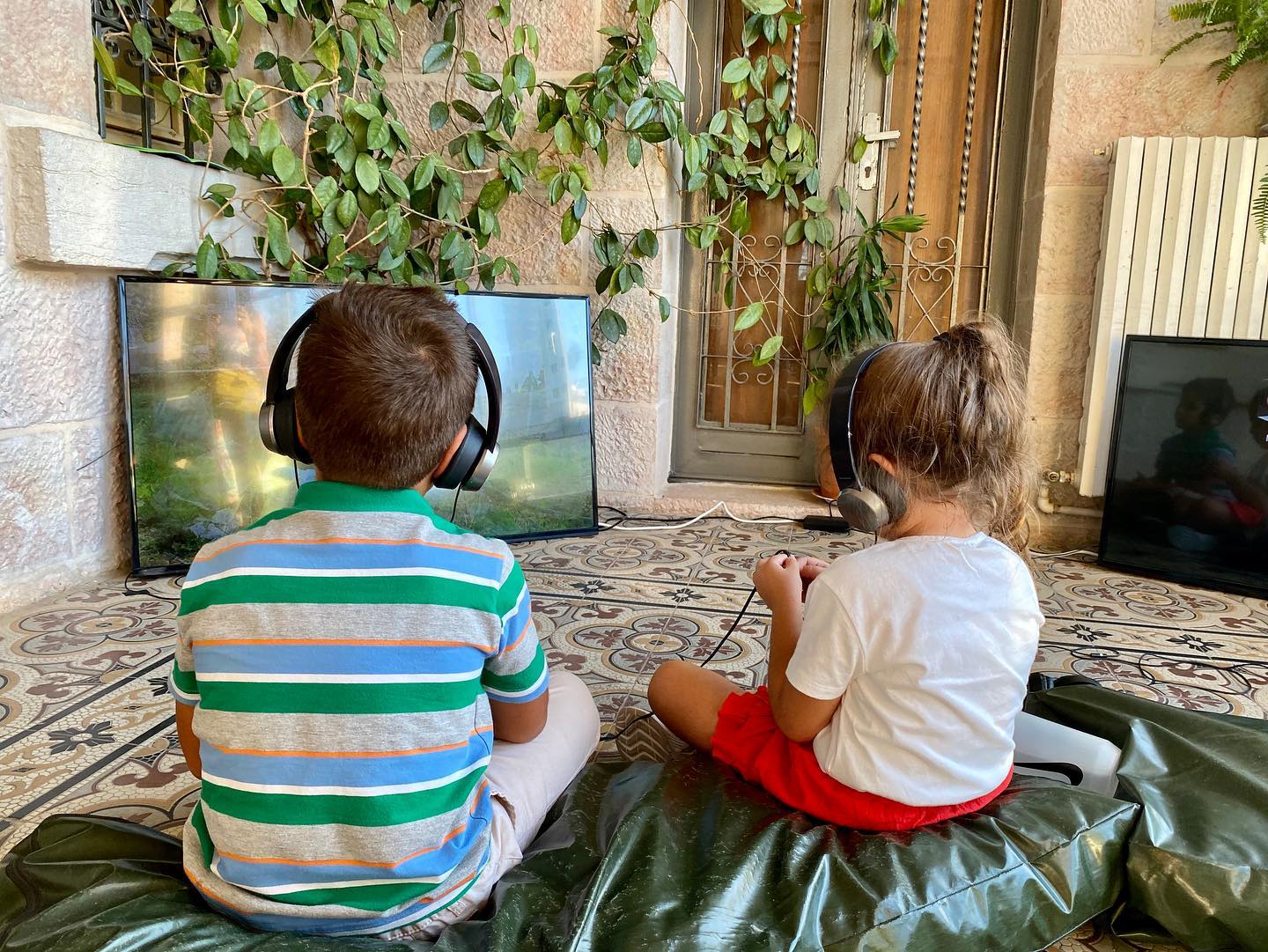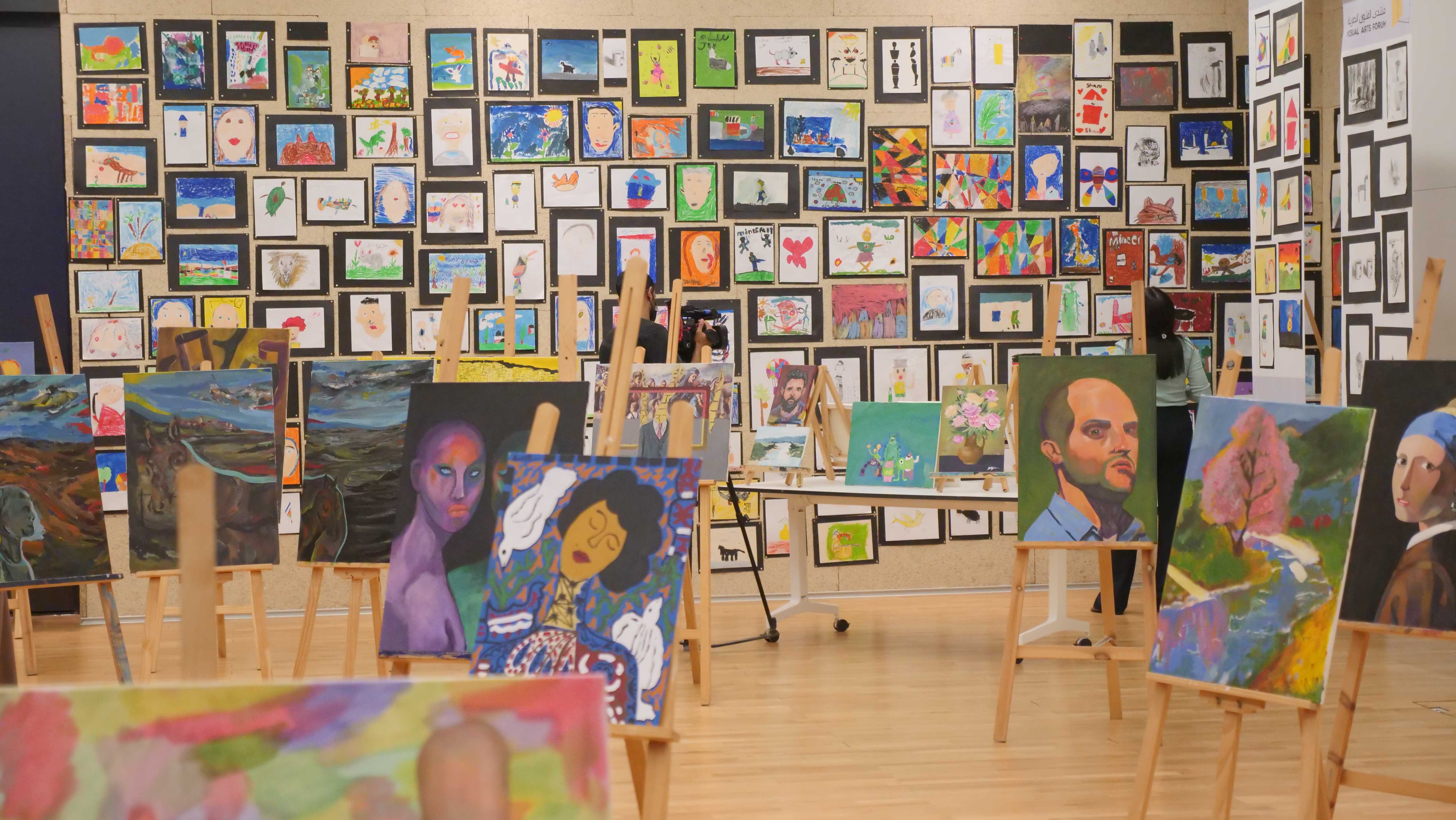

In August 2021, cultural and visual arts audiences celebrated the opening of But These Forms Need to be Created: On Self-Organisation, an exhibition at the Khalil Sakakini Cultural Centre (KSCC), and the Paths exhibition at the Visual Arts Forum (VAF) in Ramallah. Both events attracted a wide audience and brought people together again in exhibition venues after a long pause.
The On Self-Organisation exhibition was launched on 11 August and is open until 11 October at KSCC. It was curated in collaboration with guest curator Adele Jarrar as part of the KSCC’s art programme. The exhibition tackles the notion of self-organisation, practical forms of organisation such as agricultural and independent cooperatives and creating spaces for similar models to emerge within various contexts. The exhibition also addressed funding, means and forms of cultural production and communication, power relations and organisational sustainability.
On Self-Organisation features 18 artworks from individual artists and collectives in various interdisciplinary fields including art interventions, research-based works and international art spaces, including Lapsus (Romania), Space 52 (Greece), Daniel Elias (Palestine), Mutasem Siam (Palestine), Jana Nakhal and Ashraf Mtaweh (Lebanon), Ziad Naitaddi (Morocco), ABC Artists’ Books Cooperative (International), Dross Collective (UK), Charbel Khoury and Monica Basbous (Lebanon), Sada Movement (Palestine), Malak Abdelwahab (Palestine), Joud Tamimi (Jordan), Engy Mohsen (Egypt), Soukaina Joual (Morocco), Mohamed Abdelkarim (Egypt) and Mooni Studio (Palestine), Donghwan Kam (South Korea), The First Engineering Commune – Majed Daghlas and Haneen Nazzal (Palestine), Om Odeh Communal Farm - Majdi Habash and Michel Tannous (Palestine), Benji Boyadgian (Palestine) and Omnia Sabri (Egypt).
The artworks are arranged into six thematic chapters: Experimental Organisation includes two ongoing research-based works; What about the Sheep? showcases three attempts at self-organisation; Hakoura? An Infrastructure features three art interventions inspired by the land; Networking Self-Organisation presents four art interventions utilising technology as an organisational tool; Playful? includes an interactive game and installation; How to Organise? Artistic Praxis presents four artworks as dialogues, installations, video installations, collages and posters alongside other ‘non-artistic’ works produced by self-organised groups.
Adele Jarrar, guest curator, commented: “By addressing self-organisation, an urgent topic in several fields including the arts, agriculture, labour, housing, politics, etc., in dialogue with experimental, politically and socially engaged self-organised art collectives, we aim to share the exhibition theme with a wider audience who could relate to this idea to other non-artistic experiences. For me, this is an important objective I was pleased to achieve, specifically, to initiate a connection between the arts and new audiences.”
The KSCC also organised a conference entitled al-‘Una in parallel to the launch of the exhibition based on a process of collective research and investigation. The event focussed on how self-organisation and solidarity economics inform liberation and decolonisation as part of an exploration of co-ops in Palestine and a re-examination of the participants’ practices as potential precedents for a resilient and sustainable economy. The Centre will continue activities and events related to the exhibition artworks during September.
The VAF organised an exhibition entitled Paths, launched on 25 August at the A.M. Qattan Foundation. The audience engaged with a wide range of artworks created by students of various ages and levels. The artworks were produced over the past two years through academic courses and workshops. Paths showcases more than 500 paintings on cardboard, paper or canvas, created by nearly 300 students between the ages of five and 70 years old. The works implement several painting techniques taught by the Forum as part of its academic curriculum targeting the 5-11 age group and the 12 and older age group, divided into 12 academic levels. They reflect the journey from learning the basics of drawing (perspective, depth, dimensions and shading), to painting with acrylics, oils, watercolours, urban sketching, portraiture and anatomy, covering a spectrum between beginner and professional skills.
Baraa Abu Ramadan (14 years old), a 5th-grade student at the Forum, described her experience: “I began painting two years ago after I realised my talent at the Forum during the COVID-19 lockdown and school closures. With practice, I honed my skills and was able to concentrate more and notice small details. Taking part also boosted my social skills, which in turn affected my character.”
The exhibition was followed by an interactive drawing activity held between 26-27 August. The event, entitled I Draw with My Family, attracted children and their families who experimented with drawing and colouring and produced simple artwork like masks and collage. This art event is the fruit of the academic courses lying at the core of the Forum’s mission within the framework of its visual arts education programme. This programme seeks to enhance the artistic and conceptual skills of all participants, regardless of age and level.
“The two exhibitions conclude a four-year-long partnership between the VAFF (Visual Arts: A Flourishing Field) project, the Khalil Sakakini Cultural Centre and the Visual Arts Forum,” said Yara Odeh, VAFF manager. “During which, the two partners were able to accumulate unique educational and practical expertise alongside contributing to the art field with a series of art-focussed conceptual and technical workshops and training sessions. Both partners adopted an experimental and innovative approach, leading VAF to create an academic curriculum and KSCC to develop a strategic vision for its upcoming work.”
Visual Arts: A Flourishing Field is a project supported by the A.M Qattan Foundation and funded by Sweden.

